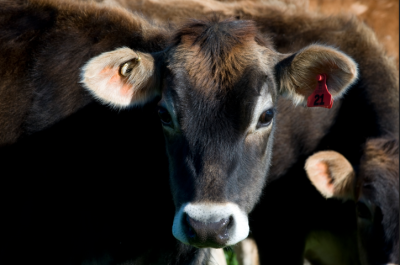 Calving 2023 — Be a mate, update NAIT
Calving 2023 — Be a mate, update NAIT
Calving is a busy time on-farm. It’s also a great opportunity to support lifetime traceability by fulfilling your NAIT obligations. It’s essential to be able to trace animals back to their original source.
If we have a biosecurity incursion or we’re managing a livestock disease outbreak like M. bovis, NAIT helps us work out where affected animals have been, what other animals they have come into contact with, and what we need to do to prevent the spread of disease.
NAIT obligations during calving
During calving season, you must:
- fit all calves with a NAIT tag before they reach 180 days old (the tag should be in the central or inner part of the right ear, between the 2 veins)
- register any fitted NAIT tags within 7 days of tagging
- tag and register all calves before their first movement. So if you are sending them off your location, make sure you meet your NAIT obligations.
We recommend using a scanner to register your animals and record movements.
For more helpful guidance around calving this year, including what do to when buying or selling calves, check out the link below.
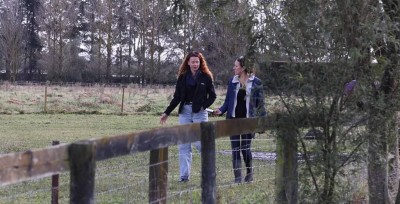 What makes OSPRI a great place to work?
What makes OSPRI a great place to work?
At OSPRI, no two days are the same - especially when you're working out in the regions and meeting with farmers. While it's hard to pick just a few things, we've asked some of our people to share what they love about being at OSPRI.
For one of our Regional Partners Rhea, being able to connect with our farmers and stakeholders, rain or shine, is really what makes her day.
Check out the video below to learn more about our people and what they do.
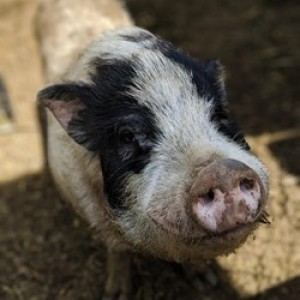 Have you declared your non-NAIT animals yet?
Have you declared your non-NAIT animals yet?
Declaring your non-NAIT animals plays an important part in supporting disease management and New Zealand’s biosecurity. By July 31, you must declare all non-NAIT animals at your location.
This information gives us a better idea of where animals of different species are being farmed together, which is essential for managing disease outbreaks that cross between species such as foot-and-mouth disease (FMD).
This covers all cloven-hoofed animals that currently require an Animal Status Declaration (ASD form), including:
- Sheep
- Goats
- Pigs
- Alpacas
- Llamas
- Ostriches
- Emus
To declare these animals, all you need to do is provide a tally in the NAIT system, that reflects the estimated number of animals as at June 30.
For a guide on how to add this information to your NAIT location number, check out the link below.
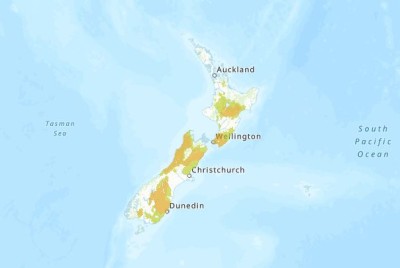 Introducing the Vector Risk Status map
Introducing the Vector Risk Status map
With hunter feedback in mind, we've developed a new Vector Risk Status map which allows hunters who supply wild deer to meat processors to identify the TB status of the area where the animals have come from.
Hunters must declare this information in question (g) of the MPI-listed Hunter Supplier Declaration form.
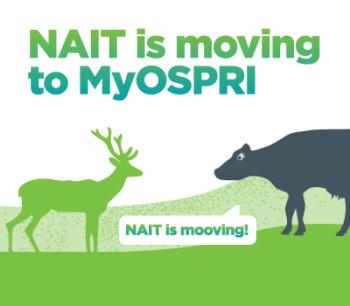 Have you heard about MyOSPRI?
Have you heard about MyOSPRI?
MyOSPRI is our new farmer customer portal for self-service with OSPRI’s programmes. You can now use MyOSPRI to complete electronic ASDs.
In the future, NAIT will move to this website. We encourage you to set up your MyOSPRI account today to avoid the rush later.
To set up an account, click the sign-up button below. It's important that you set up your account using the same email address you use for NAIT to allow all of your data to transfer across when the time comes.
Sign up tips
- Sign up using the same address you use for NAIT. If you'd like to use a different address, please change it in NAIT first before signing up to MyOSPRI. This will help your NAIT data transfer across later.
- You will need your own individual email address to sign up. If you are a PICA who currently shares one with your family or team in NAIT, please sign up using your NAIT email address and then ask your team to sign up using their own email address. Then you can invite them to join your MyOSPRI account.
- If you don't have an email address in NAIT, please log in and add one before signing up to MyOSPRI. This will help your NAIT account data transfer across later.
Remember, your NAIT information will only appear later. We will let you know when it is time to start using NAIT in MyOSPRI instead of the current NAIT website.
For more information, check out the link below.

